Unfortunately, Oliver Queen is a poor shot – especially when trying to shoot an arrow weighed down by a full-size boxing glove. The arrow misses Jesse James, and instead it hits the caravan of some pageant goers dressed as miner-49s. The missed arrow causes the cart’s horse to rear violently.
Clark slips away, changes into his Superboy identity and burrows underground to stop the out of the control animal. When Superboy returns to take care of Jesse James, he finds that Oliver has already used his bow to subdue James … but not through archery. Instead Oliver just dropped the bow over the crook’s head – trapping him being the bow and the bowstring.
Superboy flies the crook to jail. When he returns dressed again as Clark / Wyatt Earp, he finds another villain from the past is wreaking havoc – this time it’s Sir Modred – who fatally wounded King Arthur and is now chasing a boy dressed as King Arthur to relieve his evil victory. Clark borrows a rope from a kid dressed as Harry Houdini, and devises another trick arrow to stop the foe from the past.
Clark hands Oliver a makeshift rope-arrow and suggests that the future Green Arrow shoot the rope into a nearby tree. The plan is that Sir Modred’s horse will run into the rope line and throw its rider. It’s a good plan, but it fails because young Oliver Queen isn’t an archer. The rope arrow misses a tree and hits a passing milk truck instead.
Once again Clark changes into Superboy. He plugs the hole in the milk truck. The driver Jim Brand of Brand B Ranch expresses his gratitude.
When Superboy returns to stop Modred, he finds Oliver has the matter under control. He’s removed the bowstring from his Robin Hood bow and created a slingshot.
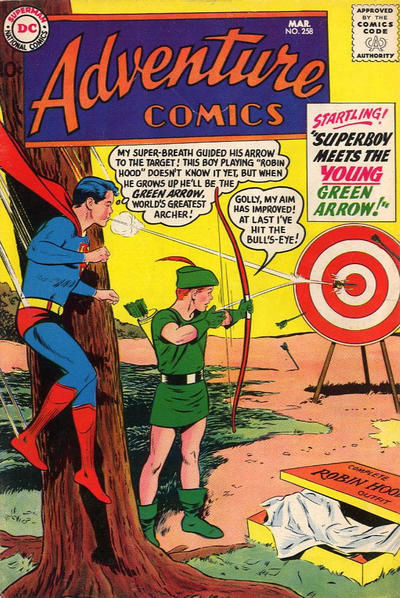
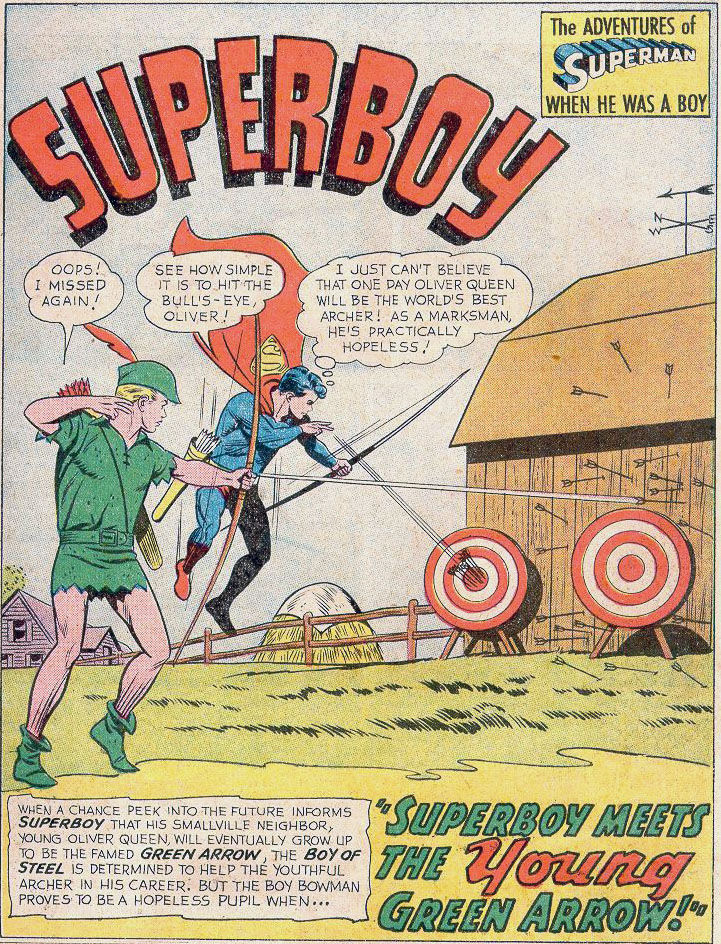
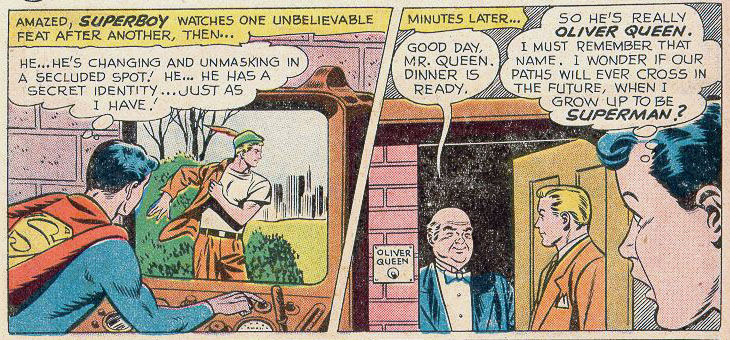
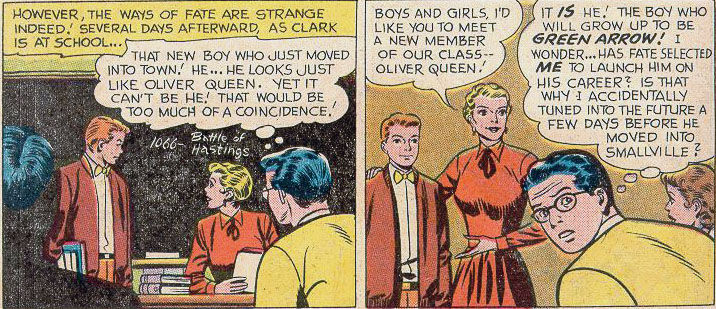
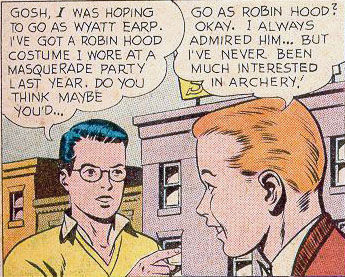
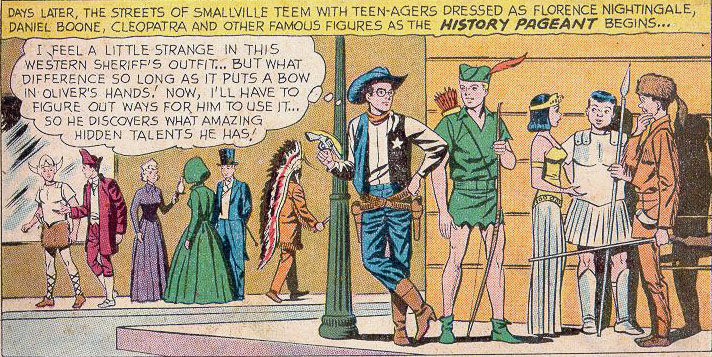
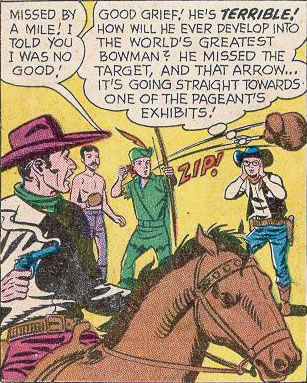
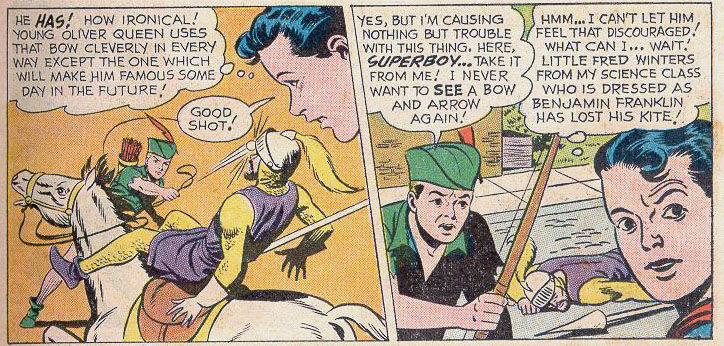
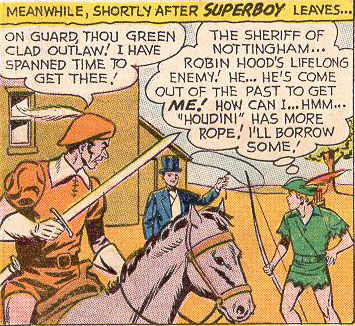
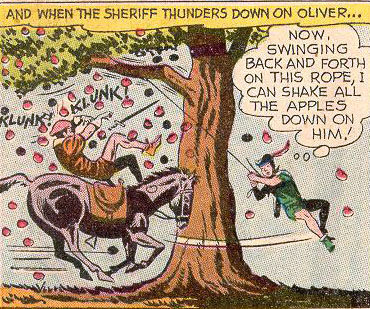
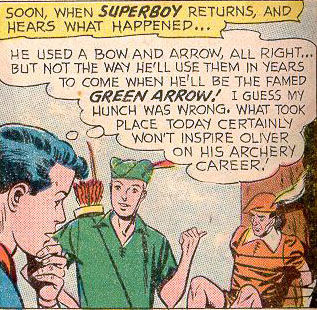
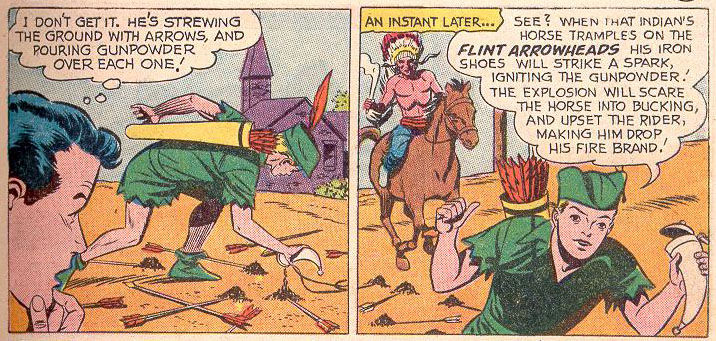
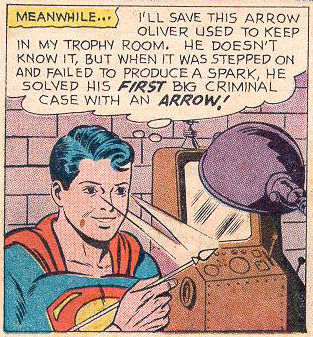
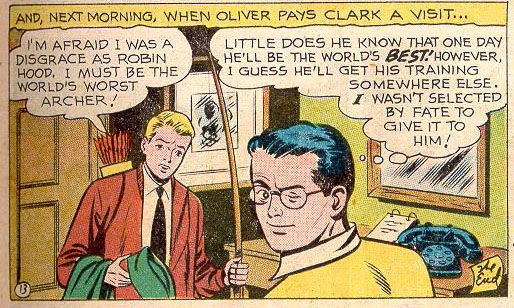
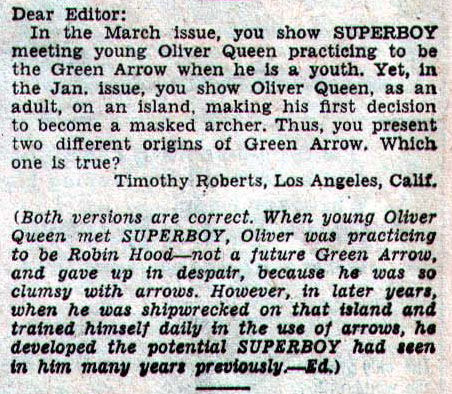
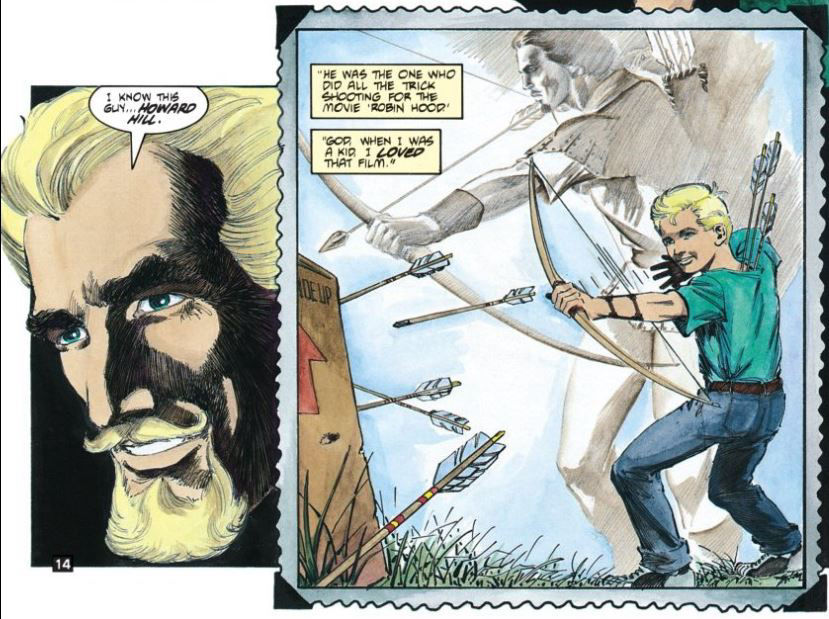
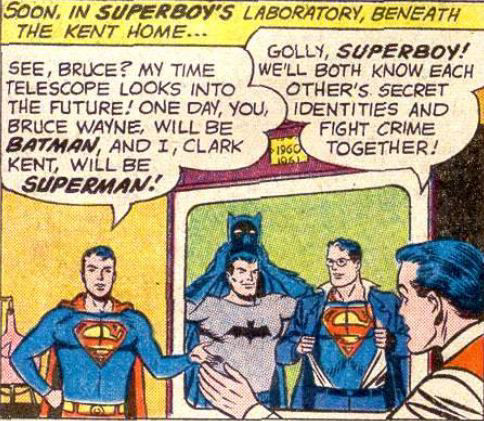
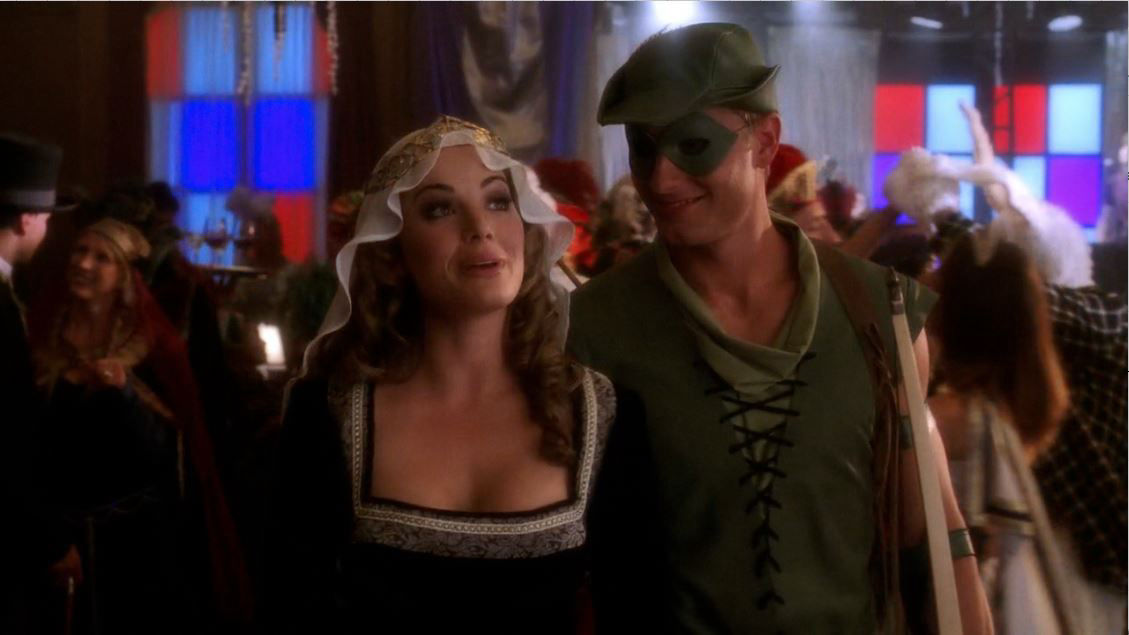
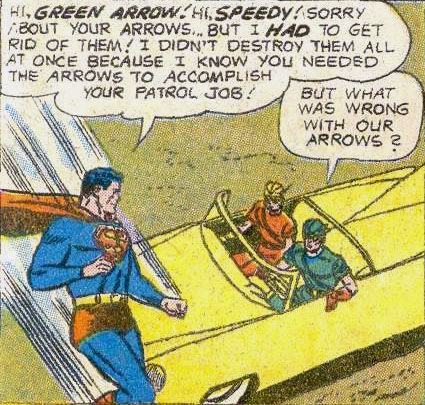
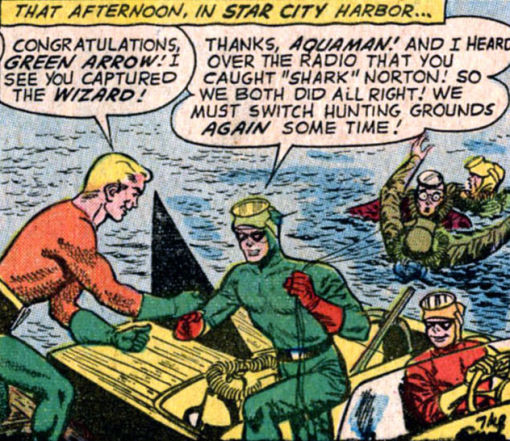
Contact Us